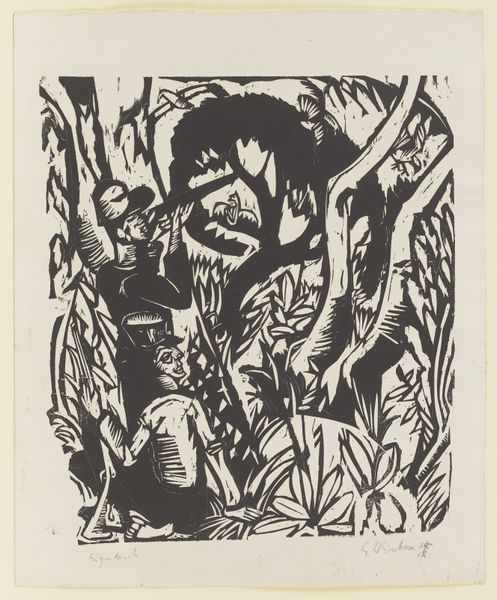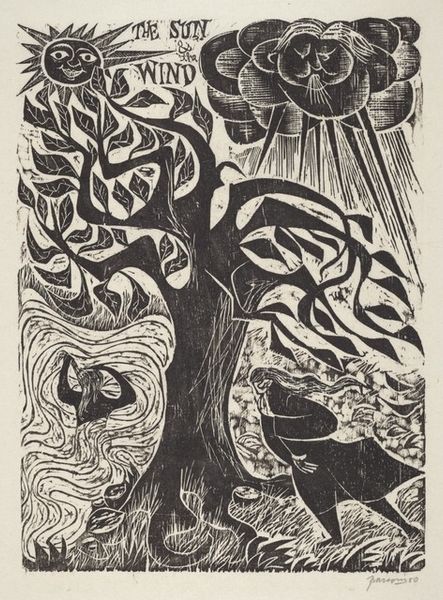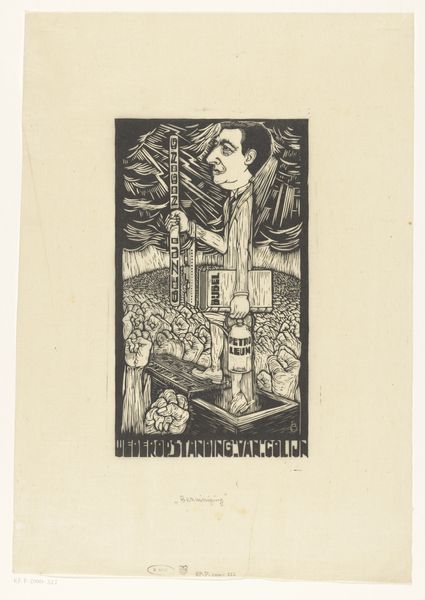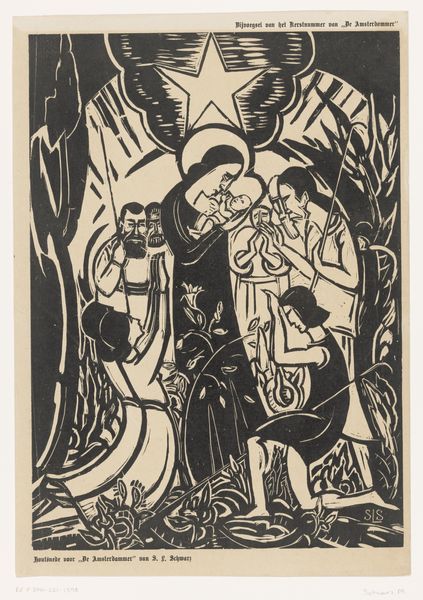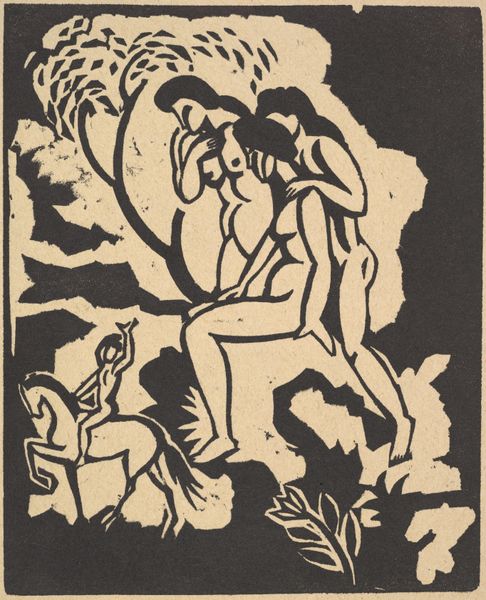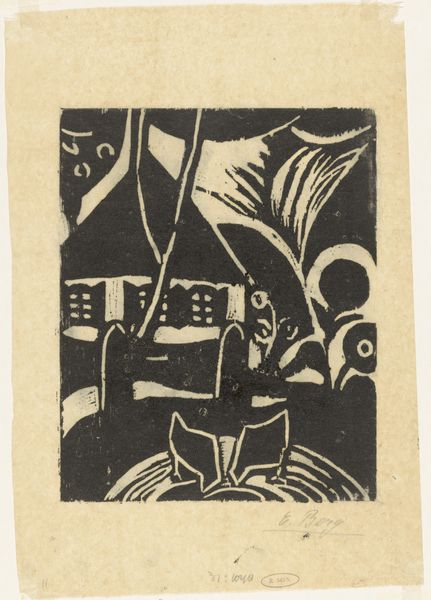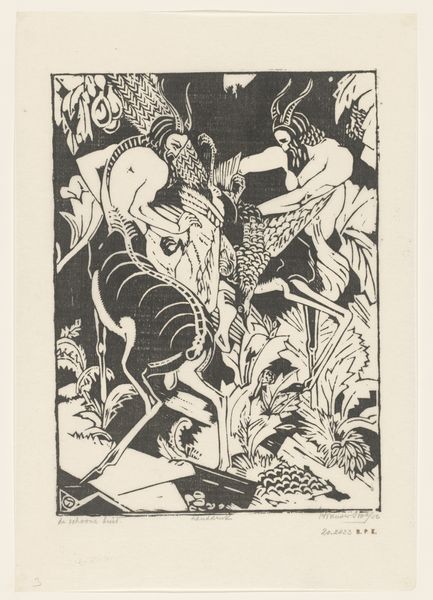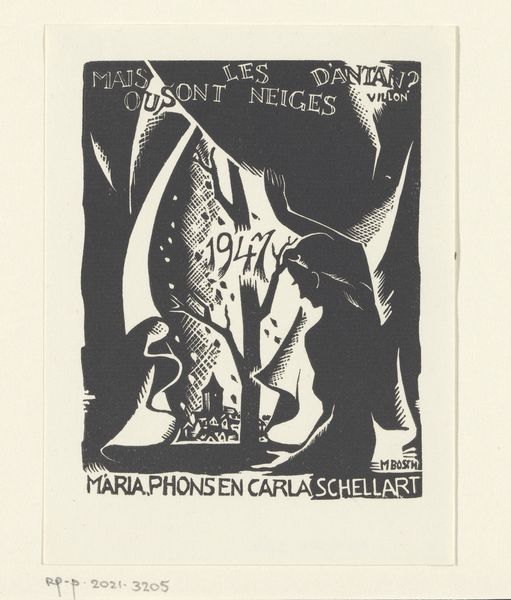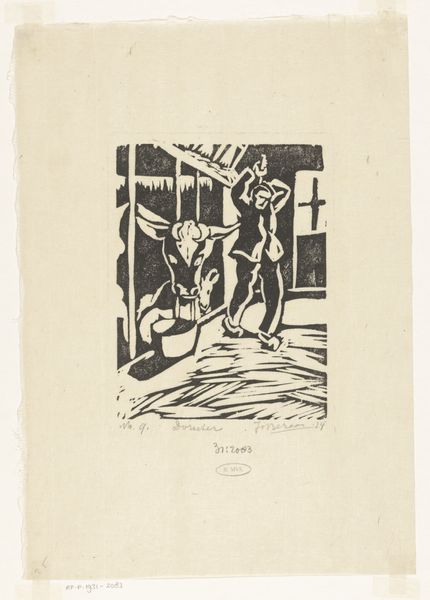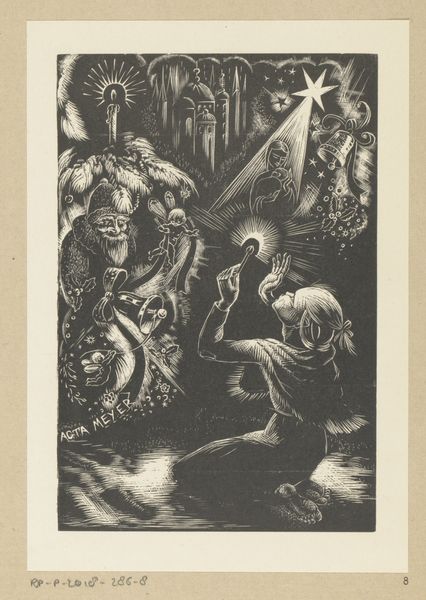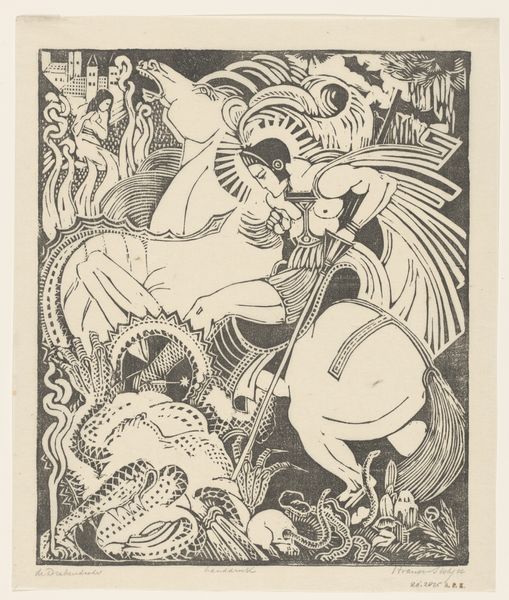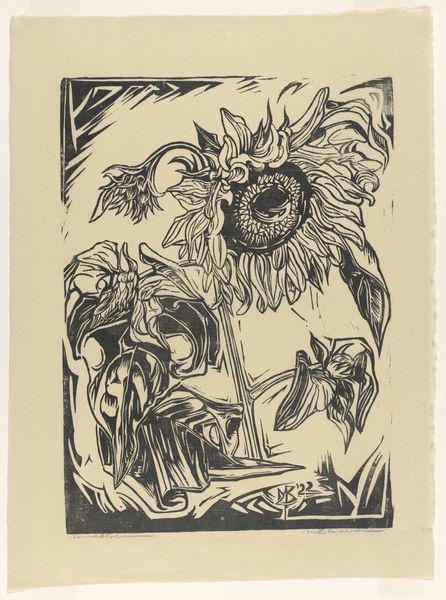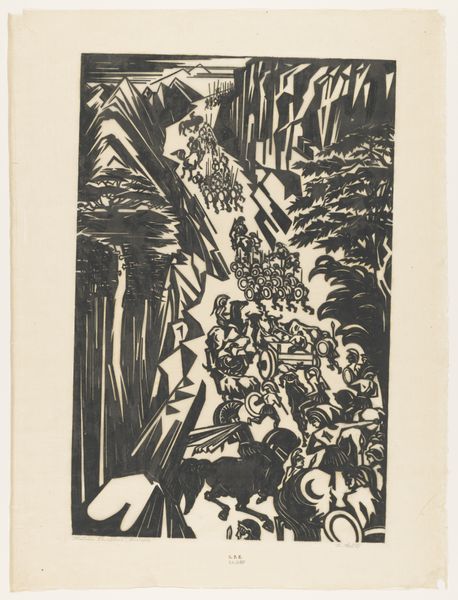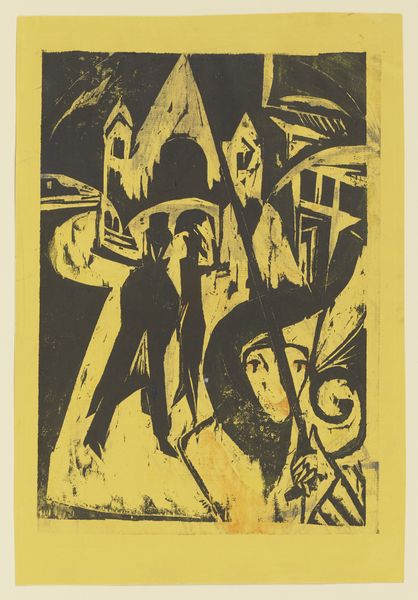
Uitnodiging voor een tentoonstelling van tekeningen en aquarellen van Leo Gestel in Kunsthandel N. Eisenloeffel te Amsterdam 1923
0:00
0:00
Dimensions: height 155 mm, width 100 mm
Copyright: Rijks Museum: Open Domain
Editor: This intriguing black and white poster from 1923 is an invitation to an exhibition of drawings and watercolors by Leo Gestel, held at Kunsthandel N. Eisenloeffel in Amsterdam. The strong contrast immediately caught my eye, and I'm struck by the flattened perspective and bold linework. What formal elements do you find most compelling here? Curator: The stark dichotomy of black and white is indeed crucial. Notice how the linocut medium lends itself to sharp, decisive forms. The artist isn’t attempting to create an illusion of depth, but instead, embraces the two-dimensionality of the picture plane. We see a distinct foreground, middle ground, and background; yet each plane operates on a similar visual field. Editor: It feels very deliberate, almost like a symbolic choice rather than an attempt at realistic representation. Are the choices perhaps referencing art nouveau, as it's tagged, or is it a unique vision entirely? Curator: The echoes of Art Nouveau are undeniable, particularly in the curvilinear elements of the stylized figures of humans and animals. But Gestel goes further; reducing the scene to its essential graphic components and thus constructing a simplified visual grammar to engage the viewer. Consider the use of positive and negative space – how it creates rhythm and dictates our gaze. What message emerges from the use of graphic design? Editor: So it is not so much about portraying something specific, but rather about the way these forms interact and create a message through pure composition? I initially was concerned about what was “real,” but that is missing the artist's intent! Curator: Precisely! Focus on the structural relationship of the elements within the artwork, and the artist's underlying intent emerges. Editor: This has really opened my eyes to appreciate the nuances in what I previously thought was a simple poster. Now I realize its design carries the essence of Art Nouveau into an abstract realm. Curator: It shows us how to see not just what is depicted, but how the depiction itself communicates meaning, demonstrating how form truly dictates function.
Comments
No comments
Be the first to comment and join the conversation on the ultimate creative platform.
